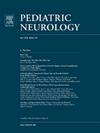儿童和青少年脑震荡后临床失眠与症状严重程度加重和恢复延迟有关
IF 3.2
3区 医学
Q2 CLINICAL NEUROLOGY
引用次数: 0
摘要
背景:关于儿童脑震荡中特定类型睡眠障碍的患病率和影响的证据有限。本研究旨在(1)确定儿童脑震荡后临床失眠症(PCCI)的患病率,(2)确定PCCI对脑震荡恢复结果的影响,(3)确定与PCCI相关的临床特征。方法对2021年1月至2022年12月在儿科三级转诊脑震荡诊所就诊的患者(n = 164,年龄9-17岁)进行横断面研究。PCCI是用失眠严重指数来确定的。比较损伤后伴有和不伴有失眠症患者的症状严重程度、认知功能、睡眠卫生行为和运动耐量等特征。对康复患者进行亚组分析,以确定PCCI对脑震荡恢复时间的影响。结果超过三分之一的患者(59例,36%)出现PCCI。PCCI患者的症状严重程度是无失眠症患者的3倍(P <;0.001)。PCCI患者在言语记忆(P = 0.01)和视觉记忆(P = 0.02)认知测试域和睡眠卫生行为(P <;0.001)。康复患者的亚组分析(n = 113)显示,PCCI患者的恢复时间明显延长,与伤后无失眠患者相比,恢复时间延长了1个多月(平均恢复时间:89天vs 57天,P = 0.004)。结论spcci是影响儿童脑震荡症状负担和严重程度的重要因素。本文章由计算机程序翻译,如有差异,请以英文原文为准。
Postconcussion Clinical Insomnia is Associated With Heightened Symptom Severity and Delayed Recovery in Children and Adolescents
Background
There is limited evidence on the prevalence and implications of specific types of sleep disturbance in pediatric concussion. This study aimed to (1) identify the prevalence of postconcussion clinical insomnia (PCCI) in children, (2) determine the impact of PCCI on concussion recovery outcomes, and (3) ascertain clinical characteristics associated with PCCI.
Methods
A cross-sectional study was conducted in patients (n = 164, aged 9-17 years) presenting to a pediatric tertiary referral concussion clinic from January 2021 to December 2022. PCCI was identified using the Insomnia Severity Index. Characteristics, including symptom severity, cognitive function, sleep hygiene behavior, and exercise tolerance, were compared between patients presenting with and without insomnia postinjury. A subgroup analysis of recovered patients was undertaken to determine the impact of PCCI on concussion recovery duration.
Results
Over one third of patients (n = 59, 36%) presented with PCCI. Symptom severity was three times greater in patients with PCCI compared with patients without insomnia postconcussion (P < 0.001). Patients with PCCI had inferior cognitive function in verbal memory (P = 0.01) and visual memory (P = 0.02) cognitive test domains and poorer sleep hygiene behavior (P < 0.001). The subgroup analysis of recovered patients (n = 113) revealed that patients with PCCI had a significantly prolonged recovery duration, taking over one month longer to recover compared with patients without insomnia postinjury (mean recovery duration: 89 vs 57 days, P = 0.004).
Conclusions
PCCI is an important contributing factor of symptom burden and severity in pediatric concussion.
求助全文
通过发布文献求助,成功后即可免费获取论文全文。
去求助
来源期刊

Pediatric neurology
医学-临床神经学
CiteScore
4.80
自引率
2.60%
发文量
176
审稿时长
78 days
期刊介绍:
Pediatric Neurology publishes timely peer-reviewed clinical and research articles covering all aspects of the developing nervous system.
Pediatric Neurology features up-to-the-minute publication of the latest advances in the diagnosis, management, and treatment of pediatric neurologic disorders. The journal''s editor, E. Steve Roach, in conjunction with the team of Associate Editors, heads an internationally recognized editorial board, ensuring the most authoritative and extensive coverage of the field. Among the topics covered are: epilepsy, mitochondrial diseases, congenital malformations, chromosomopathies, peripheral neuropathies, perinatal and childhood stroke, cerebral palsy, as well as other diseases affecting the developing nervous system.
 求助内容:
求助内容: 应助结果提醒方式:
应助结果提醒方式:


